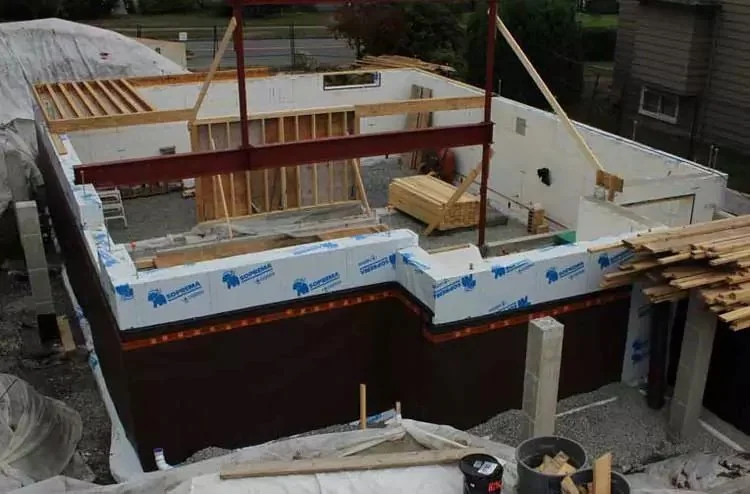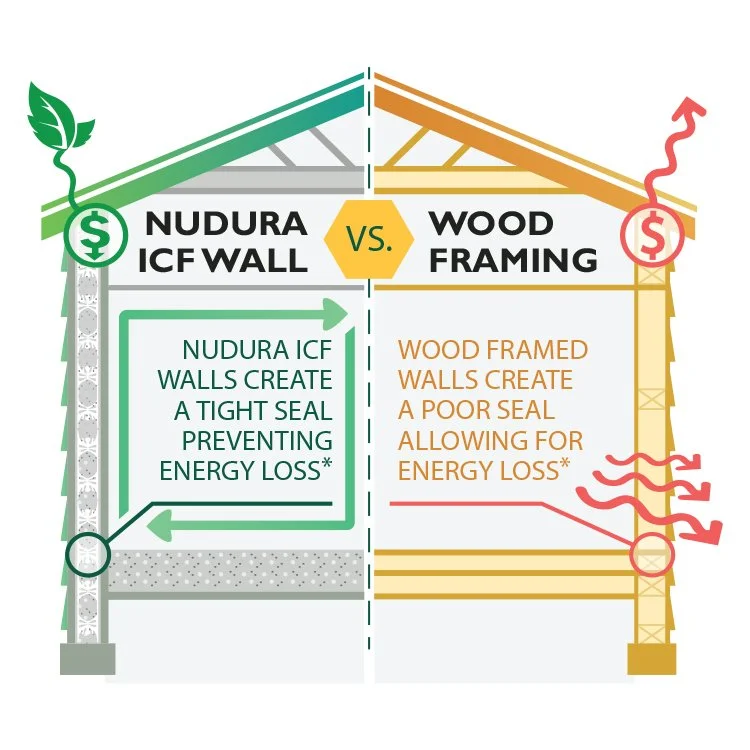Building Smarter: Exploring the Benefits of Insulating Concrete Forms (ICFs)
Are you dreaming of a home that's not only beautiful but also safe, comfortable, and sustainable? Insulating Concrete Forms (ICFs) might be the answer you've been searching for. This innovative construction method is gaining popularity for its superior performance and long-term benefits, offering homeowners a compelling alternative to traditional wood framing.
What are Insulating Concrete Forms?
Imagine a stack of giant, interlocking Lego bricks filled with concrete. That's essentially how ICFs work. These forms are stay-in-place concrete forms typically made of two expanded polystyrene (EPS) panels. These panels are usually 16 inches high, 48 inches long, and approximately 2.5 inches thick, with a space between them that determines the wall thickness.
Polypropylene webs, or ties, are strategically placed every 6 or 8 inches to withstand the pressure of the concrete as it's poured. These ties also act as attachment points for both interior and exterior finishes, such as drywall on the inside and a damp-proof membrane or rainscreen on the outside.
Once the concrete is poured into the cavity, the EPS panels and ties remain permanently in place. This "stay-in-place" aspect is what gives ICFs their name. The EPS panels also provide excellent insulation, with a minimum R-value of R-24. By using thicker panels, you can even achieve R-values of R-30 or R-40, drastically improving energy efficiency.
The ICF Advantage: Why Choose ICFs Over Traditional Methods?
Let's dive into the specific advantages ICFs offer compared to conventional construction methods, especially for foundation walls:
Below Grade: A Smarter Solution for Foundations
Traditionally, builders use 3/4" plywood with metal ties to form foundation walls. After the concrete hardens, the plywood is removed, requiring the ties to be broken and the plywood to be cleaned and stored. This process is often wasteful, as the concrete damages the plywood, eventually leading to its disposal. The costs of transport, cleaning, and storage further contribute to the expense.
Once the plywood is removed, a 2x4 or 2x6 stud wall is built on the inside and insulated with fiberglass batts to provide thermal performance and create a surface for attaching finishes.
ICFs streamline this process, offering a superior solution in several ways:
Integrated Forming and Insulation: ICFs eliminate the need for separate forming and insulation processes. They form the concrete wall and provide continuous insulation in one step, saving time and labor.
Enhanced Thermal Performance: Meeting the increasingly stringent building code requirements for thermal performance is easier with ICFs. Their high R-value significantly reduces heat loss, improving energy efficiency.
Moisture Resistance: Plywood-formed basement walls are prone to drawing in ground moisture, leading to dampness and musty smells. ICFs, when used with proper footing membrane protection (like Fastfoot®), eliminate this problem, keeping your basement dry and comfortable.
ICFs for Homeowners: A Long-Term Investment
Building with ICFs translates into tangible benefits for homeowners, including:
Lower Energy Bills: Nudura ICF homes can slash heating and cooling expenses by up to 60% thanks to continuous insulation that minimizes thermal bridging and reduces energy consumption.
Increased Durability: Nudura ICF walls provide impressive fire protection (up to 4 hours), resist winds up to 250 mph, and offer superior impact resistance against flying debris.
Enhanced Comfort: Enjoy better air quality, reduced mold risk, and excellent soundproofing that dampens outside noise in your Nudura ICF home.
Sustainability: Build a more environmentally friendly home with reduced energy consumption and a longer lifespan, contributing to a more sustainable future.
How Does ICF Stack Up Against Traditional Wood Framing?
ICF VS. WOOD FRAMING
ENERGY EFFICIENT. Nudura ICFs provide superior insulation, which significantly reduces the energy required to heat and cool the home.
INCONSISTENT. Wood-framed homes are drafty and not airtight, meaning the energy performance within the home will be inconsistent.
COST EFFECTIVE. Nudura ICFs greatly reduce the cost required to heat and cool the home, resulting in up to 60% savings in the homeowner’s annual utility costs.
ELEVATED COSTS. Due to the higher energy output needed to heat and cool a home with wood framing, utility costs are substantially increased.
ECO-FRIENDLY. Nudura's webs are made from 100% recycled polypropylene, reducing waste and the house’s carbon footprint.
WASTEFUL. Wood framing contributes to global deforestation and greatly increases the house’s carbon emissions.
The Future of Home Building is Here
Insulating concrete forms offer a comprehensive solution for building durable, energy-efficient, and comfortable homes. By integrating the forming, insulation, and moisture control processes, ICFs provide a cost-effective and sustainable alternative to traditional construction methods. If you're looking for a home that will last for generations, protect your family, and save you money on energy bills, consider building with ICFs. Your dream home can be beautiful, safe, and sustainable with the help of this innovative technology. Ask us how TLN can incorporate ICF’s into your project!







